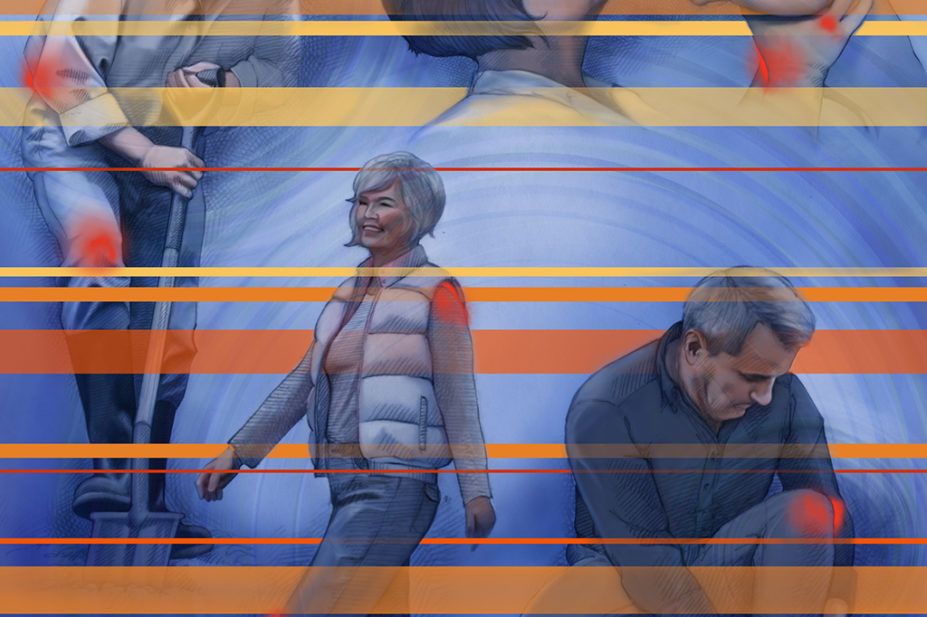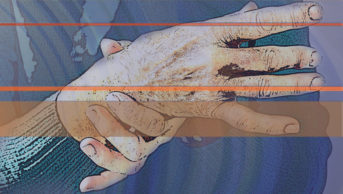
Science Photo Library
This is the third and final article in this series, designed to help pharmacy teams support patients who are experiencing joint pain or patients who have been diagnosed with osteoarthritis (OA) and may benefit from recommendations for appropriate management strategies, including the wide range of products available in pharmacies.
Read more about our joint pain partnership and find related content on our Pharmacy Learning Centre.
By using available opportunities, such as when patients collect prescribed medicines or when patients purchase an over-the-counter (OTC) product, pharmacy teams can provide patients with additional advice and guidance, including signposting them to resources, charities and organisations that can provide additional support.
In the ‘Pharmacy guide to joint pain: diagnosis and assessment‘ and ‘Pharmacy guide to joint pain: management‘, best practice for pharmacy teams was outlined for patients who present in community pharmacy with new onset joint pain. In this article, case studies provide further context for the appropriate diagnosis and management of patients.
Case study 1: Assessing a patient with ‘red flag’ symptoms
- Prior reading: ‘Pharmacy guide to joint pain: diagnosis and assessment‘
An overweight man in his 50s, who is not a regular customer at the pharmacy, approaches the counter and speaks to a member of the pharmacy team.
Pharmacy technician: Hello, is there anything I can help you with today?
Patient: Hi there, my wrist has been sore, and I was wondering if you could recommend something for pain relief?
Pharmacy technician: I’m sorry to hear that. Would you like to come into the consultation room so that we can discuss this further?
Patient: OK.
Pharmacy technician: Have you had any recent falls or injuries that may have caused the pain?
Patient: No, not at all. It just seems to have developed. It seems to be bothering me as I try to pick up and grip objects.
Pharmacy technician: Does your wrist feel stiff in the mornings?
Patient: Yes, it does. The stiffness seems to last about 15–20 minutes and then seems to ease up a bit. It can feel a bit stiff too if I’ve not used it for too long. This has been ongoing for a few months now so thought I should come and speak to someone about it.
Pharmacy technician: Have you experienced any other symptoms, such as hot swollen joints, fever or weight loss?
Patient: (Patient shows you their wrist and it looks a little red and is hot to the touch). I haven’t really noticed any other symptoms, just the pain and stiffness, but it is a little red now.
Pharmacy technician: Do you have any other health problems or are you taking any other medication?
Patient: Yes, I have had a previous cancer diagnosis but I am currently in remission.
Pharmacy technician: As you have told me that you have had a previous condition and that today your wrist appears a little red and swollen, I think it would be worth a visit to the nearest NHS walk-in centre to get this looked at. Here is a list of the nearest centres to us.
Patient: Thank you. I shall go there now.
Case study 2: Symptoms of mechanical joint pain
- Prior reading: ‘Pharmacy guide to joint pain: diagnosis and assessment‘
A woman aged 48 years, a regular customer in the pharmacy, approaches the counter and speaks to the pharmacy technician.
Pharmacy technician: Hello Ms Spence, is there anything I can help you with today?
Patient: Hello, I wanted to ask your advice. I’ve noticed my knee is a bit sore, especially when walking up the stairs or when I’m doing chores around the house.
Pharmacy technician: I’m sorry to hear that, have you ever had any trouble with your knee before?
Patient: Actually, yes, now you mention it. When I was younger, I tore a ligament in the same knee and had an operation, but it’s been fine for years.
Pharmacy technician: What is the pain like?
Patient: It’s a grating pain and I’ve noticed it’s definitely worse when I’m moving around a lot more.
Pharmacy technician: Does your knee ever feel stiff?
Patient: Well yes, in the morning it’s a bit stiff when I get out of bed, but that usually eases off really quickly once I start moving around.
Pharmacy technician: It sounds to me like you may have some symptoms that are indicative of osteoarthritis
(OA). This may seem concerning, but it can be managed through the pharmacy, let me explain further. Your knee and other joints are sites of continual growth, degeneration and repair. In most cases, the body is able to repair the damage itself and no symptoms are experienced. OA arises as a result of the failure of normal replacement and regrowth in the joints. Do you want to come into the consultation room so I can ask you a few more questions? Then we can get to the bottom of this and look into possible management options?
Case study 3: Providing advice for the management of mechanical joint pain symptoms
- Prior reading: ‘Pharmacy guide to joint pain: management‘
A woman aged 64 years comes into the pharmacy to pick up her husband’s medication. When trying to open her bag, she tells the pharmacy technician she has been having some trouble with her hands.
Patient: My hands have been getting very uncomfortable over the past few months, mainly this thumb and the ends of these fingers, carrying the shopping and this lot is so difficult. Could you recommend anything?
After asking about red flag symptoms, you decide the woman is likely to have typical hand osteoarthritis (OA), with no red flag symptoms.
Pharmacy technician: It sounds to me as if you may have some symptoms that are indicative of OA. This may sound concerning but it can be managed, let me explain further. Your knee and other joints are sites of continual growth, degeneration and repair. In most cases, the body is able to repair the damage itself and no symptoms are experienced. OA arises as a result of the failure of normal replacement and regrowth in the joints. I can recommend some exercises for you that may help ease the pain and improve your symptoms.
Patient: That sounds good, are they difficult? How will I remember them? Is there anything you can give me for the pain too?
Pharmacy technician: Don’t worry, they are very simple, and should only take 5–10 minutes each day. I can give you a leaflet called ‘Keep moving’, which has all the exercises outlined in case you forget. Do you have any other health problems or are you taking any other medication? Have you tried anything to relieve the pain?
Patient: No, I don’t take anything at the minute and haven’t tried anything for the pain. I’ve tried using an ice pack but it’s useless.
Pharmacy technician: OK, well in that case I would recommend that you try a topical gel for pain relief. If you use this in combination with the exercises I have shown you, you should hopefully see some improvements. You could also try using a heat pack when your hands are feeling sore if you haven’t had any luck with the ice pack.
Case study 4: Providing advice on the application of topical creams
- Prior reading: ‘Pharmacy guide to joint pain: management‘
Mr Wilson approaches the medicine counter in the pharmacy and tells you that his wife had been advised to use ibuprofen gel on her knee as she had symptoms indicative of osteoarthritis (OA).
Mr Wilson: Hello, I just wanted to get some advice on this gel that my wife has been recommended. She used this a few years ago when she was diagnosed with OA. She is having a bit of a flare up of symptoms at the minute and this gel worked well before. She hasn’t used it in a few years and I just wanted to check she is using it properly as she has used it for two days but hasn’t had any pain relief yet.
Pharmacy technician: Hi Mr Wilson, if your wife has previously been diagnosed with OA and has used this gel before and it’s been effective, it’s definitely the best thing to try first. These gels can take up to two weeks before they give their maximum effect. The gel should be applied regularly as explained in the leaflet. If she doesn’t notice any effect after two weeks she could then try an alternative treatment.
Mr Wilson: Oh right OK, I didn’t realise that. Oh yes, it said to apply a small amount of the gel up to four times daily, so I’ll make sure she does that too.
Pharmacy technician: Has your wife been given any advice on exercises she could do with her knee as well as using the gel? If she was given any before I would definitely recommend she starts doing these again and this should also help ease the pain and improve movement. I can also give you some leaflets for her with some simple exercises she could start doing at home. Using an ice or heat pack can also help with pain relief.
Mr Wilson: Yes, now you mention it she did have some exercises given to her before, so I’ll hunt these out when I get home, I’m sure I put them in the drawer. If you had a leaflet too that would be great, and I’ll mention to her about the ice or heat pack too, thank you.
*All case studies are fictional.



